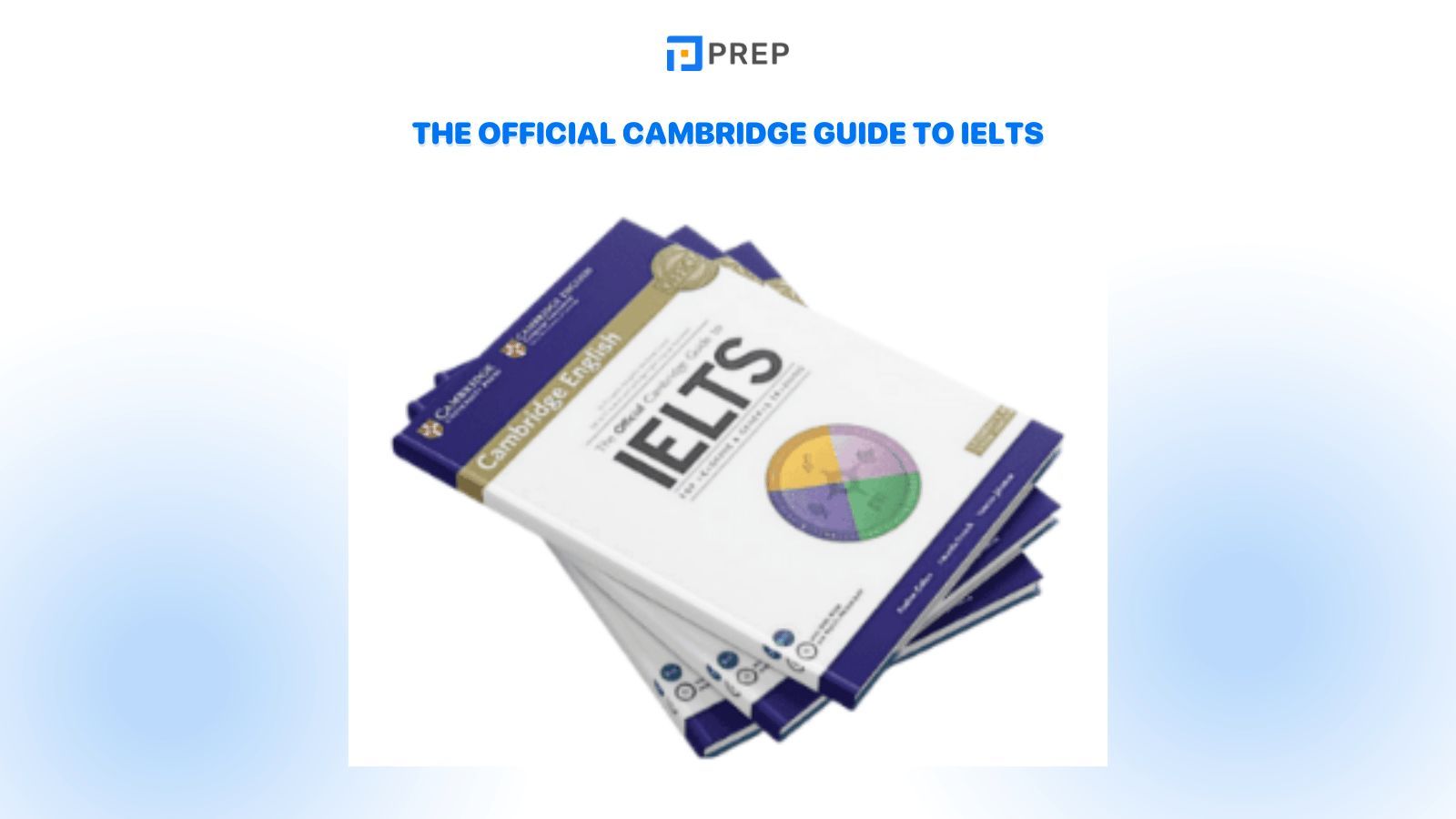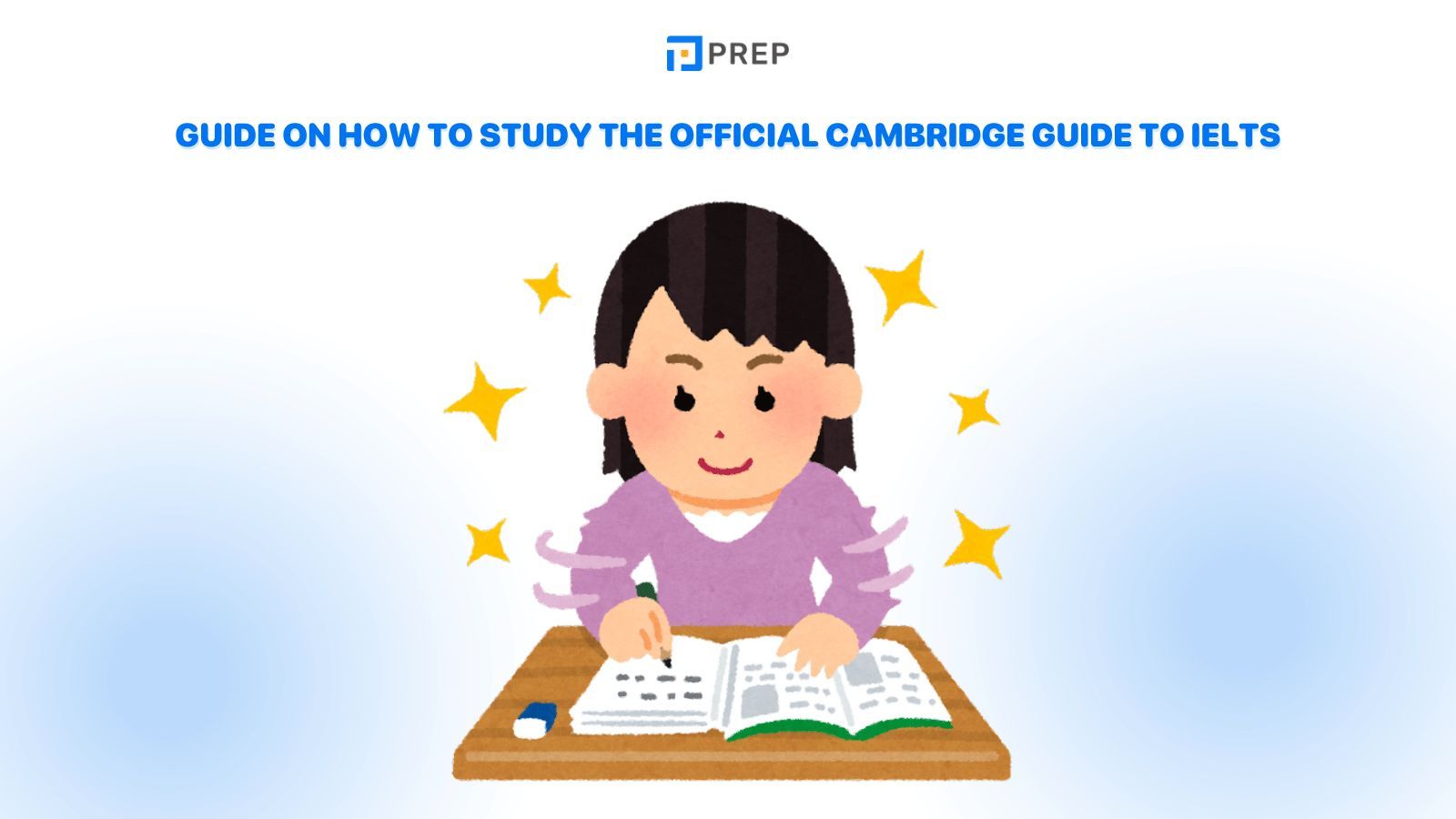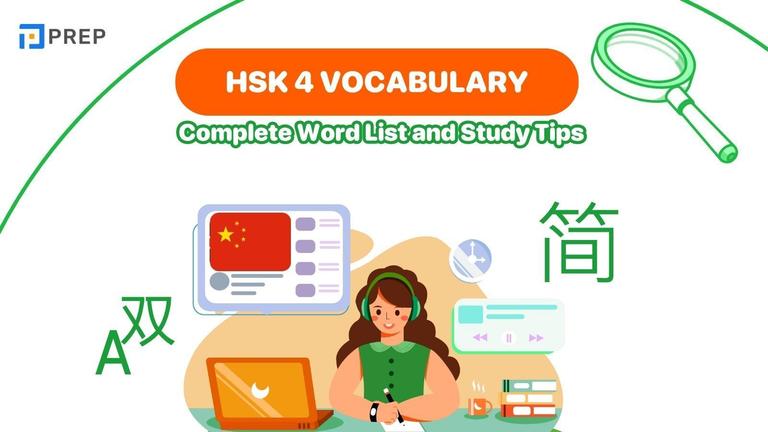Download the Official Cambridge Guide to IELTS book with free audio files
The Official Cambridge Guide to IELTS book is considered a detailed roadmap for candidates who want to achieve an IELTS band score of 6.0. So what does this book include, and what are its advantages and disadvantages? Let's evaluate it in detail in today's article on prepedu.com!
- I. General introduction to The Official Cambridge Guide to IELTS book
- II. Content of The Official Cambridge Guide to IELTS book
- III. Advantages and disadvantages of The Official Cambridge Guide to IELTS book
- IV. Guide on how to study The Official Cambridge Guide to IELTS book
- V. Download The Official Cambridge Guide to IELTS book (PDF + Audio) for free

I. General introduction to The Official Cambridge Guide to IELTS book
1. General information about The Official Cambridge Guide to IELTS book
The Official Cambridge Guide to IELTS book provides students with a comprehensive knowledge base that includes both IELTS Academic and IELTS General Training. The book provides the most basic and detailed instructions for learners to achieve an IELTS band score of 6.0+. Compiled by Cambridge, a reputable organization for the IELTS exam, this book will undoubtedly provide you with the secrets and appropriate strategies to conquer all 4 skills: Listening, Speaking, Reading, and Writing.

|
2. Target audience for The Official Cambridge Guide to IELTS book
The Official Cambridge Guide to IELTS is a book that provides you with a vast amount of knowledge covering all 4 skills: Reading, Writing, Speaking, and Listening. This material is suitable for those aiming for an IELTS band score of 4.0 and above. Furthermore, the book is written for both Academic and General modules.
Note: The entire The Official Cambridge Guide to IELTS book is in 100% English, so to study and understand it, you need to have a certain level of English proficiency.
II. Content of The Official Cambridge Guide to IELTS book
1. Table of contents of The Official Cambridge Guide to IELTS book
|
IELTS Listening skill |
IELTS Reading skills |
|
1. Getting ready to listen 2. Following a conversation 3. Recognising paraphrase 4. Places and directions 5. Listening for actions and processes 6. Attitude and opinion 7. Following a lecture or talk 8. Contrasting ideas |
1. Reading strategies 2. Descriptive passages 3. Understanding the main ideas 4. Locating and matching 5. Discursive passages 6. Multiple–choice questions 7. Opinions and attitudes 8. General Training Reading |
|
IELTS Writing |
IELTS Speaking |
|
1. Academic writing Task 1 – Describing a chart, table, or graph 2. Academic writing Task 1 – Comparing and contrasting graphs and tables 3. Academic writing Task 1 – Describing diagrams 4. Academic writing Task 1 – Describing maps 5. General Training writing task 1 – A letter 6. Writing task 2 – Getting ready to write 7. Writing task 2 – Expressing your ideas clearly 8. Writing task 2 – Checking and correcting |
1. The speaking test – part 1 2. Part 2 – Giving a talk 3. Part 3 – Talking about abstract topics 4. Checking, correcting, and assessing |
|
Practice test |
|
|
1. Practice test 1 2. Practice test 2 3. Practice test 3 4. Practice test 4 5. Practice test 5 6. Practice test 6 7. Practice test 7 |
2. Structure of The Official Cambridge Guide to IELTS book
- Part 1 - Summary of the test structure: In this first part, The Official Cambridge Guide to IELTS book provides information about the IELTS test, the main content, and the comprehensive test structure, giving you an overview and building appropriate strategies to conquer the IELTS exam.
- Part 2 - Skills practice: In this part, The Official Cambridge Guide to IELTS book provides knowledge related to the 4 skills: Listening, Speaking, Reading, and Writing. Each lesson focuses on specific question types, providing information about the skills required for each question type, instructions on how to approach the questions, and strategies for effective revision and preparation for each question type. In addition to equipping necessary skills, exercises of the same question types are provided for students to apply and review the knowledge they have learned.
- Part 3 - Practice Tests: In the final part, The Official Cambridge Guide to IELTS book provides practice tests for you to try. The book includes 8 complete practice tests covering all 4 skills, following the format of the official exam, accompanied by detailed explanations for each question. The first practice test is accompanied by the most hints and specific instructions for dealing with each question type. Additionally, the Listening section includes transcripts to help learners understand the content of each sentence.
3. Benefits that the book brings to readers
- Providing the most basic knowledge about the test structure and various question types: The Official Cambridge Guide to IELTS book gives readers an overview of the test information, common question types, and approaches to each question type. From there, candidates are equipped with comprehensive skills, confidence, and foundational knowledge for the exam. Furthermore, the book provides many practice tests to assess skills and the effectiveness of applying knowledge after studying.
- Effective preparation guidance: According to the survey from the Cambridge Learner Corpus (a database of learners' test papers), test takers or individuals with high proficiency levels may make mistakes during the preparation process or hold misconceptions about the exam. This can affect their scores and preparation progress. By following the structured lessons and accompanying instructions, candidates will grasp the key skills required by the exam, thereby equipping themselves with the necessary knowledge to achieve their goals.
- Providing smart strategies and advice for intelligent test-taking: The Official Cambridge Guide to IELTS book guides you with useful test-taking strategies and advice on question preparation, skimming and scanning techniques, and finding information within passages. It also provides suggested reference materials for learners to gain a deeper understanding of the exam context. This helps candidates have a better understanding of the reasons and purposes behind each test, thus preparing with the right mindset.
III. Advantages and disadvantages of The Official Cambridge Guide to IELTS book
1. Advantages
- Credible and accurate knowledge source: The Official Cambridge Guide to IELTS book is written by top IELTS experts from the University of Cambridge. The content is carefully selected from the university's language resources, ensuring reliable information.
- Diverse question types: The guide provides detailed practice for each skill, allowing students to reinforce their abilities. It covers a range of listening exercises, from single pieces of information to longer passages and conversations. Additionally, it includes practice exercises with detailed explanations.
- Systematic test preparation: Merely practicing a large number of test papers without specific guidance and strategies won't yield effective results. The book offers strategies and instructions for each question type, helping students develop better techniques for the actual exam.
2. Disadvantages
Alongside the mentioned advantages, The Official Cambridge Guide to IELTS book also has some limitations that students should be aware of during their preparation:
- The book is entirely written in English without any available translations. Therefore, students need to have a solid English proficiency level (equivalent to IELTS 4.0 or higher) to fully benefit from the book.
- Some question types may not be updated as the book was published in 2014. Students should consult additional materials for more recent exam formats.
- The writing and speaking sample answers do not provide specific band scores or marking criteria, making it challenging to fully evaluate and understand these skills. Students should supplement their studies with specialized books or seek guidance from experienced instructors.
IV. Guide on how to study The Official Cambridge Guide to IELTS book
1. Steps for using The Official Cambridge Guide to IELTS book

- Step 1: For each skill, start by reading the introduction section about the test format, structure, and scoring criteria.
- Step 2: Read the lesson objectives to determine what areas you need to improve after studying.
- Step 3: Read the theory and instructions for test strategies.
- Step 4: Refer to the provided tips and techniques to apply during practice, such as determining how much time to allocate for skimming or scanning in the Reading section.
- Step 5: Proceed to practice the exercises.
- Step 6: Check the answer key after completing the exercises to ensure you meet the lesson objectives.
2. Effective study techniques for the book
- Organize and plan your study sessions in a logical manner, as the content of the book progressively increases in difficulty. Follow the sequence of exercises and carefully read the instructions for each question type. It is recommended to complete all the units before attempting the Practice Test section.
- Additionally, consider allocating study time to all four skills, intertwining them rather than studying each skill separately. Divide them into pairs, such as Listening + Reading and Writing + Speaking. When practicing test papers, also divide them into pairs to focus on two skills each day. This way, it will take approximately 40 days to complete the entire book.
- Attempt exercises immediately after understanding the theory and instructions to enhance long-term retention of knowledge.
- Make the most of the provided strategies and useful tips in the book to achieve high scores in the Practice Test section. Limit your time, simulate real exam conditions, and refrain from using dictionaries to assess your true abilities.
- Always take notes of essential tips, vocabulary, and grammar structures needed for the exam in a separate notebook.
3. Some notes when taking the test
- You should start with Test 1 before attempting any other tests. Since Test 1 is the first test, it includes specific instructions and strategies for completing the test.
- Regarding the timing of the test, for the first three tests, you should practice the tests according to your ability. Then, review and correct any mistakes. When you reach Test 4 and beyond, you should simulate real exam conditions by timing yourself. This approach will help you gradually train your mindset and improve your focus effectively. Additionally, you should plan to practice 1-2 tests each week, aiming for at least 5 tests per month. Use the remaining time to review previous knowledge and supplement new knowledge if necessary.
- After each test, write down new knowledge to learn and note any mistakes to correct. Avoid the situation where you finish practicing a test but don't address the mistakes, as this may lead to repeating the same errors and hinder your progress in increasing your band score.
V. Download The Official Cambridge Guide to IELTS book (PDF + Audio) for free
To help you effectively prepare for the IELTS at home, PREP has collected the link to download The Official Cambridge Guide to IELTS book with a high-quality answer key, including the complete audio. Click on the link below to download:
Not Available
Above, PREP has provided a detailed review of The Official Cambridge Guide to IELTS book, including its content, advantages and disadvantages, and instructions for effective studying. PREP hopes this article will be helpful to you! Good luck with your exam preparation!

Hi I'm Chloe, and I am currently serving as an Product Content Administrator at Prep Education. With over five years of experience in independent online IELTS study and exam preparation, I am confident in my ability to support learners in achieving their highest possible scores.
Comment
Premium content
View allPersonalized roadmap
Most read












